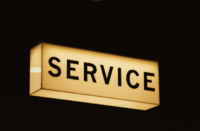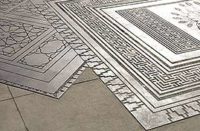As a manager of your decorative concrete installation business, it is your responsibility to develop strategic marketing activities and organize fully integrated marketing programs that benefit your customers.
Marketing activities exist in multiple forms. In 1960, marketer E. Jerome McCarthy identified four distinctive types of marketing, often referred to as the “four P’s”: product, price, place and promotion. This marketing mix provides a standard framework for a decorative concrete professional to communicate and deliver lasting value to customers.
Product
A product is a good or service that satisfies a customers’ need. Sure, you can expand that definition, but it’s sufficient for the purpose of this article.
As a decorative installer you can increase the depth or breadth of your services to continuously satisfy your customers’ needs. A deeper product line might include services beyond decorative concrete, such as landscaping. A broader product line would include a greater number of decorative concrete services beyond your specialty. If you stain concrete, learn to engrave concrete. Then learn concrete stamping. Then polishing — all in an effort to provide a variety of services that enable you to capture more business in your marketplace.
Of course, market demand should always be the driving force behind the need to strategically expand your product offering.
There are many other elements of product strategy that can help you deliver customer value. For example, decorative installers can improve the quality of their product by participating in product training. Of course, using quality products to begin with would be a smart start. So make intelligent choices about the products you use.
Your company’s brand name is another product element that communicates perceived value. Brands are common when goods are involved, but less common with services. This does not need to be the case. If your decorative service does not currently have a brand name (that you can potentially trademark), then create one. I train my Certified NewLook Installers to use the Ghosting Technique when staining stamped concrete. Essentially, you wipe off wet Translucent Color Enhancer in areas of concrete relief to expose the base color under the surface tint. But Ghosting is much easier to say, isn’t it? Use market research to identify the effectiveness of your service brand name.
Engineering your product mix should also include an evaluation of your warranties and return policies. Both communicate the value of your decorative business’s brand image.
Customers look to warranties and return policies as a sign of product performance, but it’s not easy for a customer to return an installed decorative concrete floor. Rather, consider “replacement policies“ that establish confidence in your product. Other elements of the product mix can include design, features, packaging or sizes.
Price
Your cost per square foot is not the only pricing tool at your disposal. Other elements, such as discounts, allowances, payment period and credit terms, can be used to influence your customers’ decision to sign on the dotted line.
But establishing your price per square foot is a little more complicated than you might think. Setting your pricing policy requires selecting the pricing objective, determining demand, estimating costs, analyzing competitors’ costs and prices, selecting a pricing method, and selecting the final price.
Place
Place marketing is concerned with the various methods of distributing a product and making it available to customers through strategic distribution channels. Of course, marketing channels are not limited to the distribution of physical goods only. As a decorative concrete professional, you face the challenge of making your output available and accessible to your targeted customer base. You must figure out the most appropriate agencies, locations and mediums for reaching your target market. Fortunately, there are a variety of distribution channels within the decorative concrete industry.
It’s standard practice for decorative contractors to deliver their services on a direct basis, meaning direct to the property owner. And you can market your service directly to them in a number of ways.
You’re not limited to this channel. Consider establishing a strategic alliance with distribution partners such as property development companies or architecture firms. Being a “preferred subcontractor” can connect you with or even expose you to project opportunities you would not have been aware of otherwise.
The location or locations of your decorative concrete business is another placement strategy you must consider. You can’t be everywhere at once. Most firms, even service-based firms, resolve this challenge by establishing multiple locations. Should you hire and train multiple crews to expand your physical presence within your market? Or should you stake your claim in a smaller geographic niche? The answer to these questions will depend entirely on your market research, the needs of your market, and your business’s existing constraints.
Promotion
When people think of marketing, their minds usually go to the activities involved in promotion, specifically advertising. But you’re more sophisticated than that because you read my articles, right? Yes, we seek to establish fully integrated marketing strategies that create customer value by incorporating the entire marketing mix, not just advertising.
Sales promotions are a type of short-term incentive you can use to encourage customers to hire you. Contests, games, sweepstakes, lotteries, premiums and gifts, product sampling, fairs and trade shows, exhibits, demonstrations, coupons, rebates, low-interest financing, entertainment, trade-in allowances, continuity programs, tie-ins — the list of possible sales promotions goes on and on. “The first 100 square feet are free!” And, “Hire us before a certain date to take advantage of our fall discount!”
Advertising can be done a number of ways: Print and broadcast ads, brochures and fliers, posters and leaflets, reprints of ads, billboards, display signs, window stickers, truck decals, symbols and logo marks, videos.
Businesses in the decorative concrete industry benefit most from traditional advertising, such as print ads. Online advertising using Google AdWords or a similar program can also be effective when you market on a local basis. I can tell you from personal experience that running from house to house with door hangers is NOT the most effective way of advertising your business. Learn from my mistakes.
Direct marketing is the use of mail, telephone, email, fax or even the Internet to communicate directly with specific prospective customers. Catalogs, postal mailings, telemarketing, blogs, websites, email, faxes, voice mail — whatever option you use, remember direct marketing is a numbers game. You have to expect that only a small percentage of your recipients will respond to your campaign. And only a small percentage of those respondents will actually become customers. So weigh the costs judiciously.
You can never go wrong with personal selling, the face-to-face interaction with one or more prospective customers. Make sales presentations to local architecture firms. Answer technical questions, demonstrate product applications, provide product samples and offer incentive programs. Participate in your local fair or trade show. There are a number of ways to sell your service on a personal level.
No matter how you slice it, customer value is driven by the presence of every component of the marketing mix.















